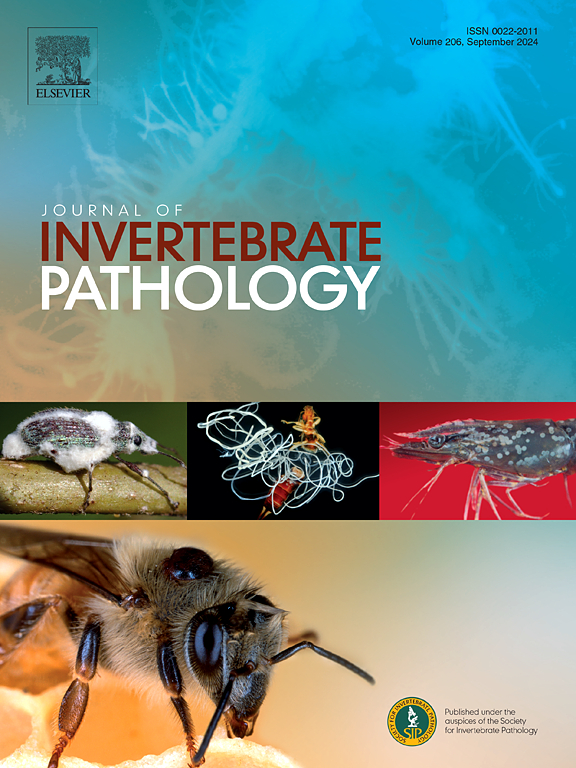Characterization and functional analysis of the small heat shock protein HSP19.5 in Bombyx mori in response to Nosema bombycis infection
IF 3.6
3区 生物学
Q1 ZOOLOGY
引用次数: 0
Abstract
Small heat shock proteins (sHSPs) are molecular chaperones known for their role in maintaining cellular homeostasis and protecting cells from various environmental stresses. This study focuses on the silkworm small heat shock protein HSP19.5 and its potential functions in the context of Nosema bombycis infection, a microsporidian pathogen causing severe disease in the sericulture industry. We cloned and characterized HSP19.5 and revealed its expression patterns in different silkworm tissues and developmental stages. Our results indicate that HSP19.5 expression is significantly up-regulated in response to N. bombycis infection, suggesting a role in the host stress response. Through a series of experiments, including RNA interference and overexpression analyses, we demonstrated that HSP19.5 promotes N. bombycis proliferation, possibly by inhibiting host cell apoptosis and regulating intracellular ROS levels. The cytoplasmic localization of HSP19.5 in silkworm cells is consistent with its function as a molecular chaperone. The results enhance our understanding of the complex host-pathogen interactions between silkworms and N. bombycis, and provides insights that may inform the development of novel strategies to control the pebrine disease.

家蚕小热休克蛋白HSP19.5对家蚕微孢子虫感染反应的特征及功能分析
小热休克蛋白(sHSPs)是一种分子伴侣蛋白,具有维持细胞稳态和保护细胞免受各种环境胁迫的作用。本文研究了家蚕小热休克蛋白HSP19.5及其在家蚕微孢子虫(Nosema bombycis)感染下的潜在功能。我们克隆并鉴定了HSP19.5,并揭示了其在家蚕不同组织和发育阶段的表达模式。我们的研究结果表明,HSP19.5的表达在瓢虫感染后显著上调,这可能与宿主的应激反应有关。通过一系列实验,包括RNA干扰和过表达分析,我们证明了HSP19.5可能通过抑制宿主细胞凋亡和调节细胞内ROS水平来促进瓢虫增殖。HSP19.5在家蚕细胞中的胞质定位与其作为分子伴侣的功能是一致的。这些结果增强了我们对家蚕与家蚕之间复杂的宿主-病原体相互作用的理解,并为开发新的控制家蚕病的策略提供了新的见解。
本文章由计算机程序翻译,如有差异,请以英文原文为准。
求助全文
约1分钟内获得全文
求助全文
来源期刊
CiteScore
6.10
自引率
5.90%
发文量
94
审稿时长
1 months
期刊介绍:
The Journal of Invertebrate Pathology presents original research articles and notes on the induction and pathogenesis of diseases of invertebrates, including the suppression of diseases in beneficial species, and the use of diseases in controlling undesirable species. In addition, the journal publishes the results of physiological, morphological, genetic, immunological and ecological studies as related to the etiologic agents of diseases of invertebrates.
The Journal of Invertebrate Pathology is the adopted journal of the Society for Invertebrate Pathology, and is available to SIP members at a special reduced price.

 求助内容:
求助内容: 应助结果提醒方式:
应助结果提醒方式:


